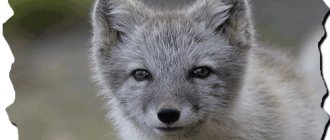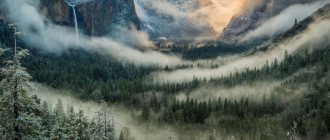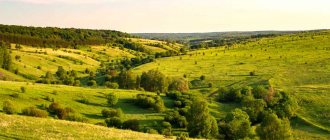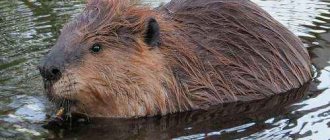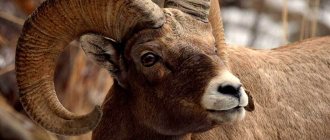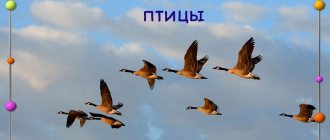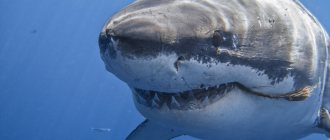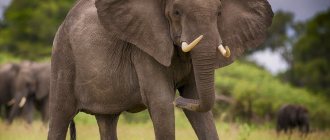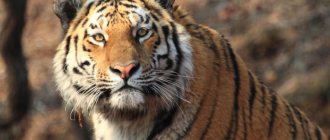homelach 06/28/201806/28/2018 Category Miscellaneous Comment.
Inhabitants of the Black Sea that pose a danger to humans
According to approximate data from biologists, over 50 thousand people in the world are injured annually from bites of marine animals, and this is only official statistics. Some of the most popular holiday destinations for residents of dozens of countries around the world are the Black Sea resorts, located on the territory of 5 countries - Russia, Turkey, Ukraine, Bulgaria and Georgia.
In the Black Sea there are up to a dozen or more biological organisms dangerous to people. But, according to experts, if you do not provoke contact with them, in most cases you can avoid unpleasant consequences.
Dangerous inhabitants of the Black Sea
Jellyfish
Venous rapana
This is one of the most common types of predatory mollusks; they originally lived in the Far East in the Sea of Japan, and in the 20th century they were accidentally transferred to the Black Sea along with Soviet military boats.
There, rapana had no natural enemies, so it caused significant damage to the fauna of the Black Sea. She began to eat large quantities of mussels, oysters, etc. Today she moved to the Mediterranean Sea.
Rapana has a beautiful shell with a spectacular curl, can live up to 12 years, and feeds on small mollusks. Previously, souvenirs were made from its shell, but now rapana is mined for preparing a variety of dishes.
Life in the Black Sea began to flourish 18-20 thousand years ago
The Black Sea was a huge almost freshwater lake, supplied with water by melting glaciers. It was isolated from the Mediterranean Sea. The first to appear here were bivalves, polychaete worms, and shrimp.
Photo: www.invaluable.com
Even when the Black Sea was a huge closed lake, its waters were slightly salty, so not all aquatic animals that arrived here from the Mediterranean were able to adapt to the low salinity of the Black Sea.
Scallop
This is another family of mollusks, of which there are more than 250 species in the World Ocean. Several species of such animals live in the Black Sea. They have round doors that look like a fan.
The symbol of the Shell oil company is a scallop.
When danger appears, scallops can jump sharply and move along the seabed; rapana is not scary for them. The meat of this mollusk is considered a delicacy, and the shells are often used to make souvenirs for tourists.
The scallop has very tender, sweetish meat; it can be used to prepare various seafood dishes, or can be eaten raw. There are especially many French national dishes with scallops.
General information
The Black Sea is the final link in a long chain of Mediterranean seas. Because of this feature, it is inhabited by a minimal number of fish. All of them are of oceanic origin and live only in water that is similar to their natural environment. However, with distance from the Strait of Gibraltar, its composition, quality and natural wealth change. Because of this, only some species of fish have adapted to the conditions of the Black Sea, which are unpretentious in food and can withstand sudden changes in the environment.
There are approximately 500 species of fish in the Mediterranean basin, but only 180 of them can be found in the Black Sea. Some of them live there permanently, while some species come only for a certain period of the year. Because of this, the diversity of Black Sea fish is further reduced.
List of the most famous representatives of ichthyofauna:
- beluga;
- sturgeon;
- herring;
- stellate sturgeon;
- Black Sea anchovy;
- sprat;
- sprat;
- mackerel;
- tuna;
- horse mackerel.
Some fish species in the Black Sea are of great commercial importance. They are caught en masse, which leads to a decrease in populations and the gradual extermination of the species. These include the following types:
- goby;
- sea ruff;
- sea Horse;
- stickleback;
- greenfinch;
- angler;
- gurnard.
Until recently, 3 species of mullet lived in the Black Sea, but severe pollution and industrial fishing brought them to the brink of extinction. To correct the situation, a bearing was brought in. It adapted well to environmental conditions and began to actively reproduce. The consequence of this was its industrial catch, which is strictly controlled and helps the pelengas avoid the fate of other types of mullet.
Resitomes or Cornerots
Another living organisms that are found in the Black Sea. Here we have a variety of jellyfish that are not dangerous to human life and health. Excessive reproduction of these animals can create problems for fishermen.
Resitomas reproduce by budding and insemination, eat plankton; a number of biologists believe that they are sometimes able to eat small fish, thanks to external digestion. Some cornermouths lead a solitary bottom lifestyle.
Cancer hermit
And this living creature of the Black Sea uses mollusk shells for its own protection. Sometimes, for this purpose, rapana are expelled from their beautiful shells. Hermit crabs live near the sea, in the tidal zone.
Sea crayfish are predatory animals that feed mainly on carrion, as well as mollusks, worms, dead fish, etc. As they grow, they periodically change shells. Finding a new shell is often a matter of life and death for cancer.
Catfish
The next inhabitants of the Black Sea are common stingrays or sea cats - one of the varieties of stingrays. They live near the shore at a depth of up to 50 m. Sea cats are predators, hunting crayfish, mollusks and small fish.
They are capable of inflicting rather painful injections on humans with the help of poisonous spines, which do not pose a real danger to life. Their meat can be eaten, but this type of stingray is not harvested on an industrial scale.
The sea cat has been known to people since ancient times; it was first scientifically described by Linnaeus. But to this day, these fish have been little studied by science.
They can be kept in huge aquariums and fed with small fish and sea worms.
Inhabitants of the Black Sea - dolphins (toothed whales)
There are three species in total in these waters. The largest are bottlenose dolphins. Slightly smaller - white sideds. The smallest are porpoises, or Azovs.
The bottlenose dolphin is the most common inhabitant of dolphinariums. For science, this species is of great importance. It is the bottlenose dolphin that scientists around the world study for the presence of intelligence. They are born circus performers. Bottlenose dolphins enjoy performing a variety of tricks. It seems that they actually have intelligence. This is not even training, but some kind of cooperation and mutual understanding between a dolphin and a person. Bottlenose dolphins understand only affection and encouragement. They don’t perceive punishment at all, then any trainer ceases to exist for them.
The bottlenose dolphin lives up to 30 years. Her weight sometimes reaches 300 kilograms. Body length is up to two and a half meters. These dolphins are well adapted to the aquatic environment. The front fins act as steering wheels and brakes at the same time. The tail fin is a powerful propeller that allows you to develop a decent speed (over 60 km/h).
Bottlenose dolphins have acute vision and hearing. They feed on fish and shellfish (they eat up to 25 kilograms per day). They can hold their breath for more than 10 minutes. They dive to a depth of 200 meters. Body temperature is 36.6 degrees, like a person’s. Dolphins breathe, periodically rising outward with air. They actually suffer from the same diseases as people. Bottlenose dolphins sleep half a meter from the surface, under water, periodically opening their eyes.
The lifestyle of dolphins is herd and family (up to ten generations together). The head of the family is the female. Males stay in a separate clan, showing interest in females mainly only during mating.
Bottlenose dolphins have enormous strength. But, as a rule, it is not applied to humans. Dolphins maintain the most friendly relations with people, as if with brothers in mind. In the entire long history of the relationship between man and dolphin, not a single attempt to offend the “big brother” has been noticed. But people often infringe on the rights of dolphins, conducting experiments on them, imprisoning them in dolphinariums.
Much has been written about the language of dolphins. We will not argue, as some scientists do, that it is richer than human speech. However, it contains a huge range of sounds and gestures, which still allows us to talk about some kind of intelligence of dolphins. And the amount of information that they can transmit and their large (larger than human) brain is strong evidence of this.
It remains to add that among the mammals in the Black Sea there are seals, but very few of them have been observed recently due to harmful human activities.
Sea ruffs
These animals live in the Black Sea and feed on crayfish and small fish. Sea ruffs have an interesting feature: they shed their worn-out skin about once a month; it comes off like a stocking.
The sea ruff lives in the coastal zone. This is a predator, so it spends most of its life in thickets of vegetation at the bottom of the sea, waiting for its next prey. Previously it was extremely common in the Black Sea, but today the population has decreased.
The sea ruffe has very tasty meat, but it has spines that contain poison, so you should be as careful as possible when cleaning. The venom can cause severe pain and then inflammation. The sea ruff is another dangerous inhabitant of the Black Sea.
Fauna of the Black Sea coast.
The landscapes of the Black Sea region are extremely diverse - from subtropics to snowy peaks. The human imagination is amazed by mud volcanoes and wild gorges, bizarre rocks and glaciers, waterfalls, caves, rare plants and animals. A hundred to two hundred years ago, the territory of the Black Sea coast abounded in wild animals, among which there were many endemic species - found only here. Such animals include, for example, the Western Caucasian tur (Severtsov's tur), Promethean mouse, Caucasian snowcock (mountain turkey), Caucasian black grouse, Caucasian viper (Koznakov's snake) and others. The presence of endemic species is explained by the fact that in the distant past the Caucasus existed for a long time as an island surrounded by the sea.
At the end of the 19th and beginning of the 20th centuries, the region developed, and, naturally, the animal world began to experience increasing pressure from humans. The Adyghe tribes, who lived in harmony with nature, left the shores of the Caucasus, and new settlers began to gradually exterminate the rarest species. The tsarist government really had a very dismissive attitude towards the protection of wildlife. For example, in 1909, the Russian Geographical Society sent a letter to the government with a proposal to organize a reserve in the North Caucasus to preserve natural landscapes and reproduce the remaining animals. The archives preserved the answer: “The protection of rare zoological species does not correspond to the concept of a nationwide useful measure for the sake of which one can sacrifice the inviolable right of private property.” Naturally, with this approach, hunters soon exterminated many valuable animals. Among those exterminated or brought to the brink of extinction were bison, deer, and aurochs.
The problem of private land ownership was resolved by the Bolsheviks in 1918, and the Caucasian State Biosphere Reserve was created in 1924. By the time of its organization, only 230 deer and several hundred aurochs and only a few bison remained in the forests. The last Caucasian bison was killed by poachers in 1927 . Now there are 7,000 deer and 4,000 aurochs living in the reserve. It's more difficult with bison. By 1927, there were only about 50 bison left in the world. Moreover, half of them could no longer produce offspring. The theory of absorption crossing saved the bison. The staff of the reserve, carrying out work on crossing bison with bison, restored the herd of bison, which now numbers 1,200 animals. But, unfortunately, these are completely different bison. The past cannot be returned.
A whole chain of state reserves has been created on the Black Sea coast. In Tamansko-Zaporozhye they protect waterfowl - geese, swans, ducks, herons. Golovinsky and Tuapse were created so that deer, wild boars, martens, minks, foxes and other inhabitants of mountain forests could live and reproduce in peace.
New inhabitants also appeared in the Caucasus. , the Altai squirrel and raccoon dog were released into the forests of the Northwestern Caucasus , and later the North American raccoon, muskrat, and nutria , which were not here before. Already in the 80s, sika deer, European fallow deer, stone partridge and gray partridge were brought to the region.
When vacationing on the coast, a person spends his time at sea more often and therefore sees dolphins and seagulls much more often than forest animals and birds. However, once you move a few kilometers into the mountains, an encounter with the inhabitants of the subtropical forest becomes inevitable.
The “master of the forest” is the Caucasian bear . In terms of height and strength, it is inferior to the brown bear of central Russia. He walks around his possessions slowly and confidently, not as warily as other animals. In summer it can be seen in forest clearings and meadows. In autumn, when chestnuts, wild pears, and beech nuts ripen, the clubfoot feeds on them. Due to the abundance of plant food, the Caucasian bear almost never resorts to hunting large mammals. An encounter with a Caucasian bear is not dangerous for humans. The clubfoot is very cowardly, and it is easy to turn him into a stampede with an unexpected cry, whistle, or shot.
Wild pigs are also widespread in the forest zone . Unlike domestic ones, they are shorter in body length, but taller on the legs. Their body is covered with thick dark brown bristles. Already at the first glance, they are struck by their exorbitantly large, but narrow and long head and disproportionately narrow body. Males are armed with long and sharp, dagger-like fangs, reaching a length of 12 centimeters. Wild pigs usually go out to feed at night. They feed on various fruits, acorns, nuts, and chestnuts. The main habitat is coniferous and beech thickets.
One of the representatives of predators is the wild cat . It is larger and stronger than a domestic cat. The coat color is dark. Its favorite habitat is dense deciduous forests, lowlands, river valleys, rock crevices, caves, hollows and holes. The main food is small rodents. The fur of wild cats is particularly durable.
A ferocious but rarely seen predator is the lynx . She, like a wild cat, huddles in hollows, caves, and rock crevices. When visiting watering places, the lynx sets up ambushes, usually hiding on a tree or rock, from where it deftly attacks roe deer, chamois, deer, aurochs and other large four-legged animals. Jumping onto the victim's back, the bloodthirsty predator bites the arteries in the neck with its sharp fangs and knocks the animal to the ground.
The pride of the local forests is the Caucasian red deer . This large, slender and graceful animal truly adorns the forests of the Western Caucasus. The male is especially beautiful, whose head is crowned with branched horns. Females do not have horns. The males' antlers fall off in early spring, and new ones begin to grow soon after.
In terms of beauty, the deer is not inferior to the roe deer . She is also slender, proud and graceful. In these animals, only males have horns. They have few branches, but are extremely beautiful. Males shed them in the fall, and new ones grow in February. These animals run with incredible speed, easily overcoming barriers, making jumps up to 8 meters in length.
Otters and minks are famous for their valuable fur . The latter are less common. These are the predators of our rivers. They dive expertly and can remain underwater for a long time, while their ears and nostrils close. Their thick and short fur does not allow water to pass through, it is strong and beautiful.
Sometimes you can find killed trout on the shore. This is the otter's job. During each hunt, the animal destroys a lot of fish. The otter's body needs phosphorus, and therefore it often sucks out only the brain of the trout and does not eat the fish. The feathered inhabitants of the local forests and meadows are also numerous. There are up to 200 species. The mountain turkey - snowcock - nests among the inaccessible rocks, and the Caucasian grouse lives in the subalpine meadows. Larks, white-throated blackbirds and alpine jackdaws sing in every possible way.
Often along the banks of rivers there is a small, dark brown bird with a large white spot on its chest. Her life is closely connected with water. This is a dipper, or water sparrow. The dipper freely dives into the water and walks along the river bottom, looking for food among the stones. Its feathers are lubricated with special fat, and therefore it always comes out of the water dry.
There are few reptiles and amphibians . There are lizards. Among the snakes - the common grass snake, the copperhead, and less often - the Koznakova viper, not a large, but poisonous snake, copper-red in color, with a characteristic zigzag stripe on the back.
trout with black and red speckles are found in the surrounding rivers . Chilly, crystal clear water, rocky bottom and fast currents are a favorite environment for trout. In October, choosing shallow places with a pebble bottom on the river riffles, trout begin to spawn. Using its tail and pectoral fins, it digs a hole, lays eggs in it and covers it with pebbles.
Turtles crawl leisurely along the sunny slopes . Their life is not at all easy. After all, every child dreams of taking a turtle from the south. At one time there were so few turtles left that they decided to limit their export. Now the situation has stabilized a little, but still the turtle likes living in his native forest much more than in a box in the kitchen. If you meet this calm creature, then let him calmly go about his turtle business.
The world of insects that you may encounter in the Caucasus is diverse. Butterflies, the most beautiful of which can be considered the mourning butterfly, the admiral, the swallowtail and the wren, flutter from flower to flower. Towards evening, hawk moths appear. They, like hummingbirds, hover over a flower and drink sunset nectar through a long proboscis.
You can often see a frozen praying mantis on bare branches. It can be 10 centimeters long. Frozen in a prayerful pose, this hunter waits for a careless fly to fly by, and then, with lightning speed, he grabs it and immediately eats it. Mantises have an interesting mating ritual. Its finale is the act of the female eating the male who has just fertilized her.
In the first ten days of June, when the nights become quite warm and humid, fireflies appear on most of the Black Sea coast . During the day, a firefly is a small, inconspicuous bug, but at night they rise into the air and arrange a circle of stars flickering with a warm, yellow light among the trees. The lights flicker. One flash follows another with an interval of a fraction of a second, but during this time the firefly can unexpectedly change its flight direction. The trajectory becomes unpredictable. The night dance of fireflies is mesmerizing. It is impossible to describe it. You can only see.
Sea crucian carp
This animal in the Black Sea is a species of fish that has a second name - weasel. Sea crucian carp can reach 25 cm in length; they live in small schools at a depth of up to 50 m, near the seashore.
In the cold season, sea crucian carp go far into the sea and live near the bottom at considerable depth. They feed on marine vegetation and small crayfish. These crucian carp are interesting because they can change sex, becoming either females or males.
Gurnard
These inhabitants of the Black Sea have a long body up to 60 cm in scales and can reach a body weight of more than 5 kg. On the body of fish there are bony plates in one or several rows. With the help of the lower fins, the sea cock can walk along the seabed.
At three years old they reach sexual maturity, spawning occurs in the summer. Sea roosters live in the coastal zone and hunt on the bottom. They have tasty meat, so they are produced on an industrial scale.
long-eared aurelia
This jellyfish lives in the Black Sea in coastal waters and has a translucent body of pale pink color. The long-eared aurelia is heterosexual and reproduces by insemination, although there are also cases of budding.
Aurelia is widespread in the Black Sea, both near the shore and far from it. It is able to withstand strong differences in air and water temperatures, as well as high salinity of sea water, therefore it is very tenacious.
The long-eared aurelia feeds mainly on plankton, immobilizing it with the help of stinging cells, and then sending it into its mouth.
There have been cases of quite severe burns of human skin and mucous membranes caused by this resident of the Black Sea.
Pipefish
Common fish in the Black Sea, reaching a length of up to 30 cm. Their body is very narrow, outwardly similar to a needle. There is a shell with bone rings. The pipefish can be green or brown, so it hides easily under water.
For example, it may become perpendicular to the seabed, making it difficult to distinguish the needle from the seaweed. This fish spawns throughout spring and summer, and the male bears children in the folds of his body for several weeks.
Sea bass
These Black Sea marine inhabitants are similar in appearance to river perches, but have so many other differences from each other that they belong to completely different orders of fish. In addition, sea bass is one of the dangerous fish in the Black Sea.
It has sharp fins equipped with poisonous glands. One prick from such a fin causes a rather unpleasant sensation in a person, especially a child, although it is not long-lasting and does not cause significant harm to health.
Sea bass, as a rule, lives on the bottom near the coastal zone, in algae. Leads a sedentary lifestyle. Some individuals can live up to several decades. Sea bass is a predator, feeding on small fish and crustaceans.
Sea dragon (sea snake) and stargazer fish
Vladimir Korkosh considers this poisonous fish to be the most dangerous for humans, since the spines of the sea dragon are extremely poisonous. Bathers can step on baby dragons buried in the sand on beaches, and careless scuba divers can grab a snake while snorkeling. The consequences of such bites are more noticeable than from scorpionfish. The victim can be paralyzed, less often it ends in death, but in any case, wounds from sea scorpion injections take a very long time to heal.
The most poisonous fish of the Black Sea is the stargazer
Similar consequences occur when meeting with a stargazer fish (sea cow). Vladimir Korkosh emphasizes that if the sea dragon usually hides from scuba divers, then the stargazer may not leave his refuge. As a result, the fish can seriously injure a curious swimmer with its poisonous gill covers and dorsal fin. The consequences of such contacts are similar to the painful sensations of victims of encounters with sea dragons.
source
27.05.2018
If you find an error, please select a piece of text and press Ctrl+Enter.
BraveRobot found more articles on this topic:
- Why sharks don't like the waters of the Black Sea
- Why is the Black Sea called “black”?
- The most dangerous animals on the planet
- Can a sea have no shores?
- How long does the Black Sea have left to live?
- Why are the bottom currents of the Black Sea deadly?
- The most dangerous sea animals
- Curious facts about the Caspian Sea
- Modern animals that came before trees
- The beauty and elegance of aquarium fish: 15 stunning photos
Dogfish
This fish is also found in the Black Sea, it is a real shark, and the most common in the world. There is a subspecies of it - the Black Sea shark or katran. Usually lives at the bottom of the sea, waiting for prey.
Katran does not pose any danger to humans.
The katran has a streamlined body shape; it can reach a length of up to one and a half meters, but on average no more than a meter. Moreover, females are larger than males. Thanks to its body shape and physical strength, the katran is able to move at high speed.
Katran meat is quite tasty, which is why it is popular in many countries. It can be eaten fresh or salted. In the USSR, commercial production of this fish was carried out, which is why the number of katrans in the Black Sea significantly decreased.
The largest inhabitant
The largest fish in the Black Sea is beluga. Its maximum length can be more than 8 m, with a weight of over one and a half tons. Today, such giants are extremely rare, but perhaps, somewhere in the depths of the sea, there are still individuals of this size.
In the mid-nineteenth century, belugas weighing more than a ton were regularly found in the waters of the Black Sea.
The average weight of belugas living in the Black Sea waters is about 150 kg. In the Kazan Museum there is a stuffed fish, the length of which exceeds 4 m, and the weight at the time of catch was more than a ton.
The fish of the Black Sea are interesting not only from the point of view of cooking and ichthyology. Catching them with amateur gear can also be a great pleasure. Before you pick up a caught trophy, you need to make sure that contact with it does not pose a threat to health.
